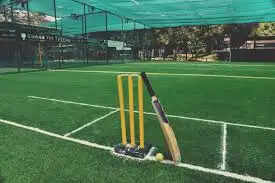Know About Box Cricket Rules

Box cricket is a variant of normal cricket, played within small areas under special conditions. Box cricket is quick and is usually played indoors, in workplaces, and on small urban fields.

Easy to Organize
Box cricket is played within a small, walled area, sometimes with netted walls. Its structured nature allows for easy organization, and therefore, it is commonly used for social and corporate events.
Teams are customarily 6 to 8 in number.
Games are of restricted overs (usually 6 to 12 per side).
Batting Rules
Each batsman has to retire after making a specified number of runs or facing a specified number of balls.
If a ball hits the net or the side wall behind the batsman directly, it is a dead ball (no runs or wickets).
Shots hitting side walls or ceilings may lead to specific run assignments.
Running between wickets is generally allowed, but some versions assign fixed runs to specific shots.
Bowling Rules
Underarm or overarm bowling may be allowed, subject to local regulations.
A bowler typically bowls a specified number of overs.
Wide balls and no-balls lead to penalty runs for the batting side.
Fielding Rules
Fielders can use walls and nets to catch on rebounds, but direct catches off the net may not be allowed.
Wicketkeepers have important roles in quick stumpings and catches.
Overarm throws may be banned for fairness.
Dismissals
Normal forms of dismissal apply (bowled, caught, LBW, run-out, etc.).
Some versions count indirect catches off the sidewalls as outs.
Special Rules
Powerplays and bonus runs may be included in some versions.
A few leagues have a "last man standing" provision where the last batsman remaining can stay on alone.
Box cricket is an exciting, action-packed version of the standard game made possible and fun for small areas. For the sake of friendly and competitive league play, familiarity with these rules ensures a fun and fair game.



